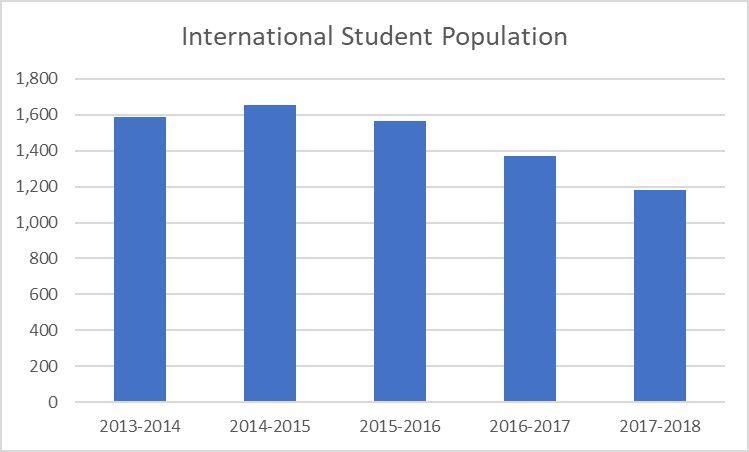Kent State invests in internationalization program
September 12, 2018
Kent State is halfway through an 18-month, university-wide program designed to assess all aspects of its international efforts.
“The American Council on Education (ACE) accepts a small number of institutions to be a part of this cohort,” said Swathi Ravichandran, an associate professor who is working on the ACE program. “It’s really any institution that has an interest in bettering their internationalization efforts.”
ACE sends an adviser to each university to help them collect data on internationalization efforts and track areas that can be improved.
At the start of the process, staff members identified six strategic areas (ACE refers to them as pillars) they considered priorities for the institution and that they would like to collect data on, assess and improve:
1. Incorporating globalism into Kent State’s curriculum by adding multicultural perspectives and international staff.
2. Sending as many students abroad as possible and bringing more foreign students to Kent.
3. Making connections and partnerships with more international universities.
4. Sending professors abroad both for research and teaching purposes.
5. Improving the way international institutions perceive Kent State’s image.
6. Creating a global distinction program. A global distinction program would be a way to measure and accredit a “global education” and global skills.
If these areas are studied and improved, students may have a wider variety of study abroad options, more classes taught by international professors and more international peers.
In addition to advantages that affect students now, Ravichandran said an internationalized education would help students years after graduation.
“Employers look for it,” she said. “It’s a desired skill set.”
Enrollment of international students at Kent State fell this semester. The 2017-18 year had 14 percent fewer undergraduate international students than 2016-17, and the graduate international student population fell 38 percent between the same years.
The decline in international student enrollment is a nationwide problem. Ravichandran hopes that the ACE process will investigate and alleviate the problem at Kent State.
“Some of it is political, some of it is social, some of it is other countries are doing a better job of recruiting than we are,” she said. “Our hope is that this project will allow us to focus on, ‘What can we do better?’”
President Beverly Warren has made internationalization a priority for the university, Ravichandran said. According to the president’s office, the program cost about $30,000.
A progress-report meeting was held Sept. 7; however, the findings were largely based on a survey that was released to Kent State staff members in late August, and due to a low number of responses, initial findings were pushed back a few weeks.
A new survey with a few questions will be released within a month. To get more respondents, Ravichandran hopes to be able to share the survey on Flashline with students.
“We truly do want to hear from everyone,” she said.
Although there will be small meetings to discuss initial findings, Associate Provost Marcello Fantoni said that a large-scale reveal of plans and findings will take place at the end of the 18 months.
“We will have a big forum where we invite everyone working at Kent State in November to be a part of the development of our report and plan,” he said.
Madison Patterson is the International Students and Issues reporter. Contact her at [email protected]












